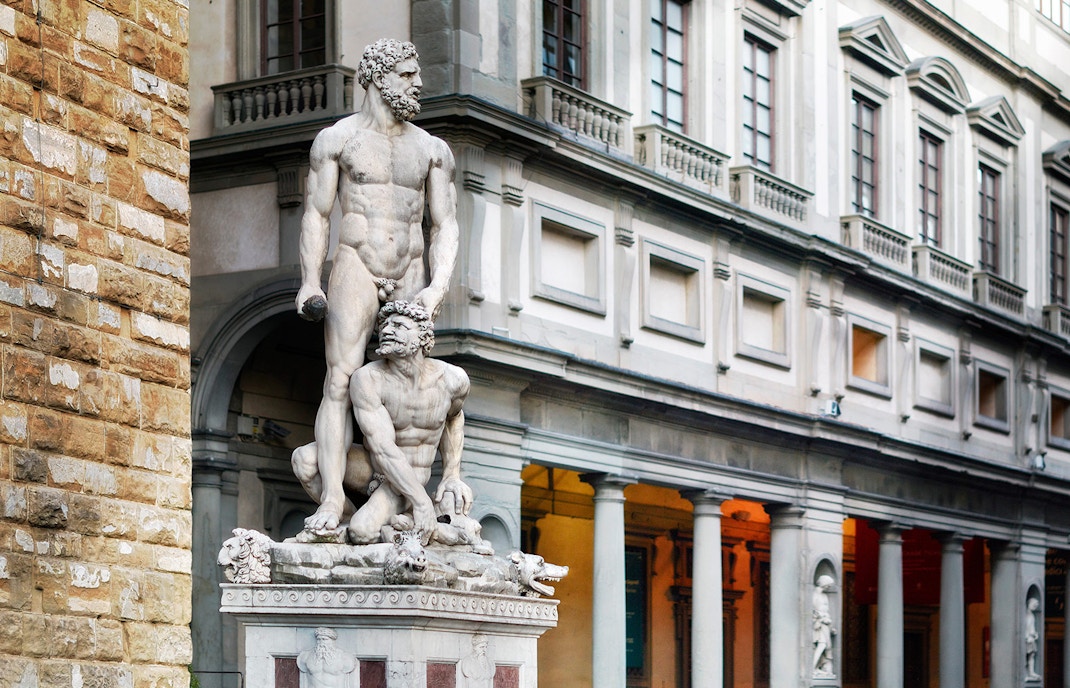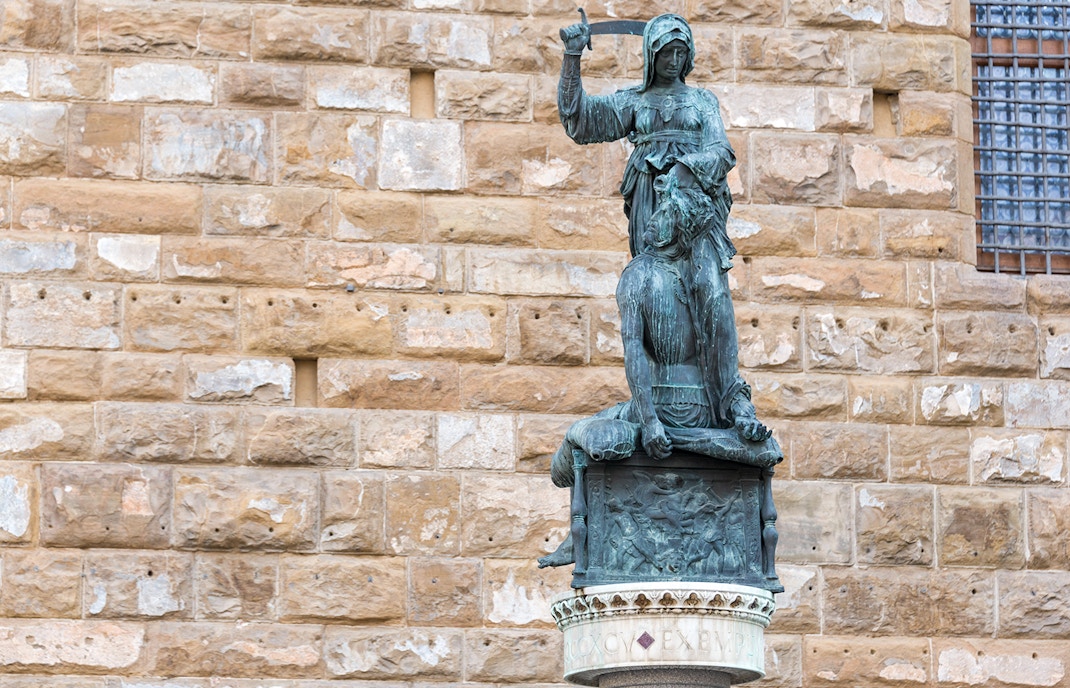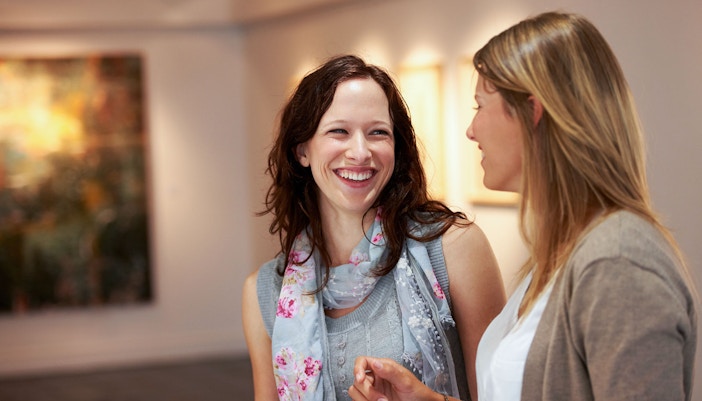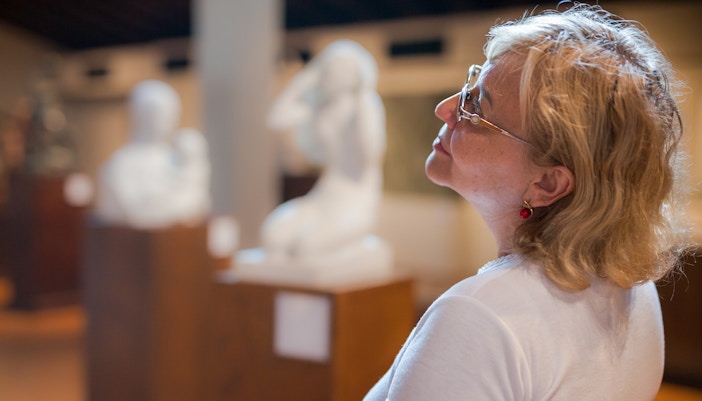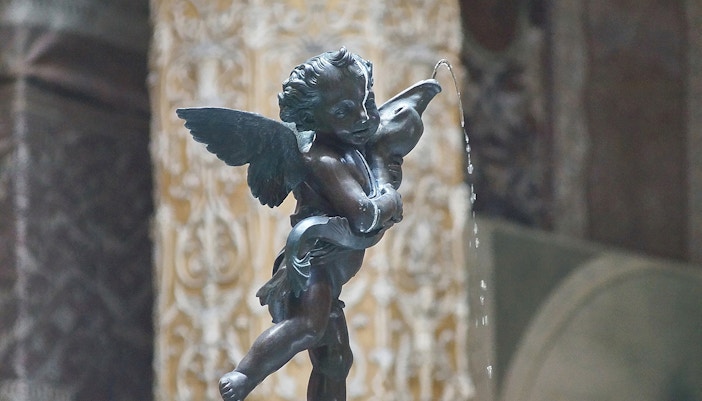Palazzo Vecchio boasts an impressive collection of frescoes and murals adorning its walls and ceilings. Discover iconic works like Giorgio Vasari's Battle of Marciano and intricate historical narratives in the Hall of the Five Hundred. The Hall of Maps has ceiling paintings of 48 Greek constellations.
Types of artwork at Palazzo Vecchio

Frescoes and murals
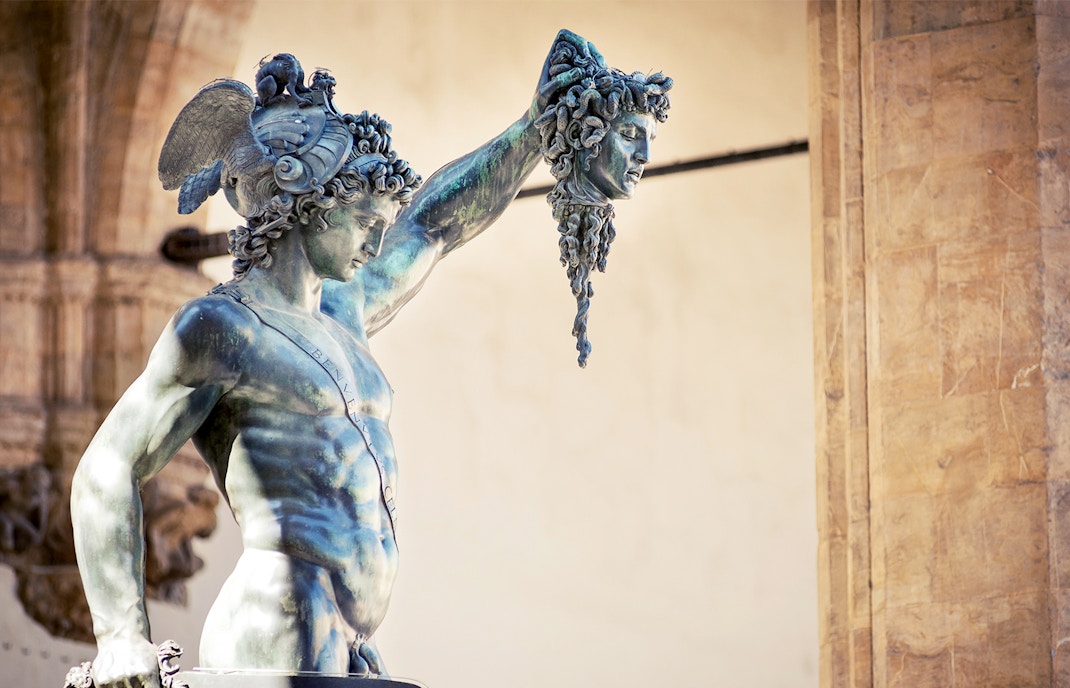
Sculptures and statues
Marvel at the exquisite sculptures that grace the halls of Palazzo Vecchio. From Michelangelo's powerful Genius of Victory in the Hall of the Five Hundred, to Donatello's powerful Judith in the Hall of Lilies, these masterpieces captivate with their artistic brilliance.
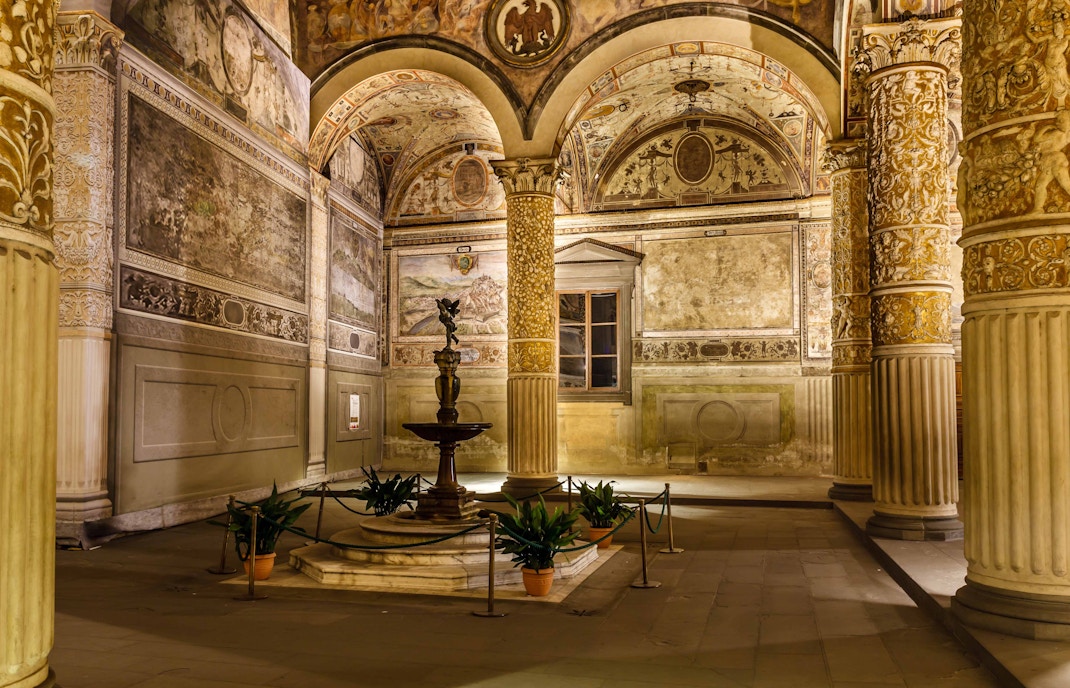
Tapestries and textiles
Delve into the world of woven artistry with the tapestries displayed throughout Palazzo Vecchio. These intricately crafted textiles depict scenes from mythology and history, offering a glimpse into the rich tapestry of Renaissance craftsmanship.
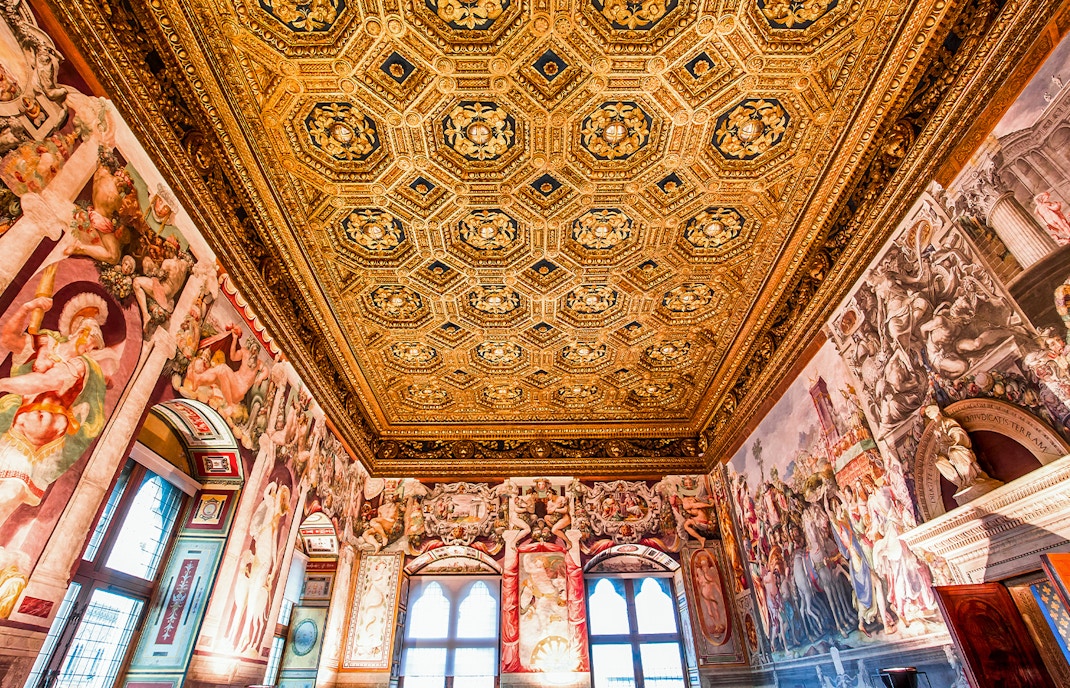
Hall of Lilies
Explore the Hall of Lilies, or Sala dei Gigli, a treasure trove of 14th-century artworks. Admire the delicate frescoes and intricate detailing that transports visitors back in time. The specific floral decor found on the walls symbolizes Florence's alliance with France.
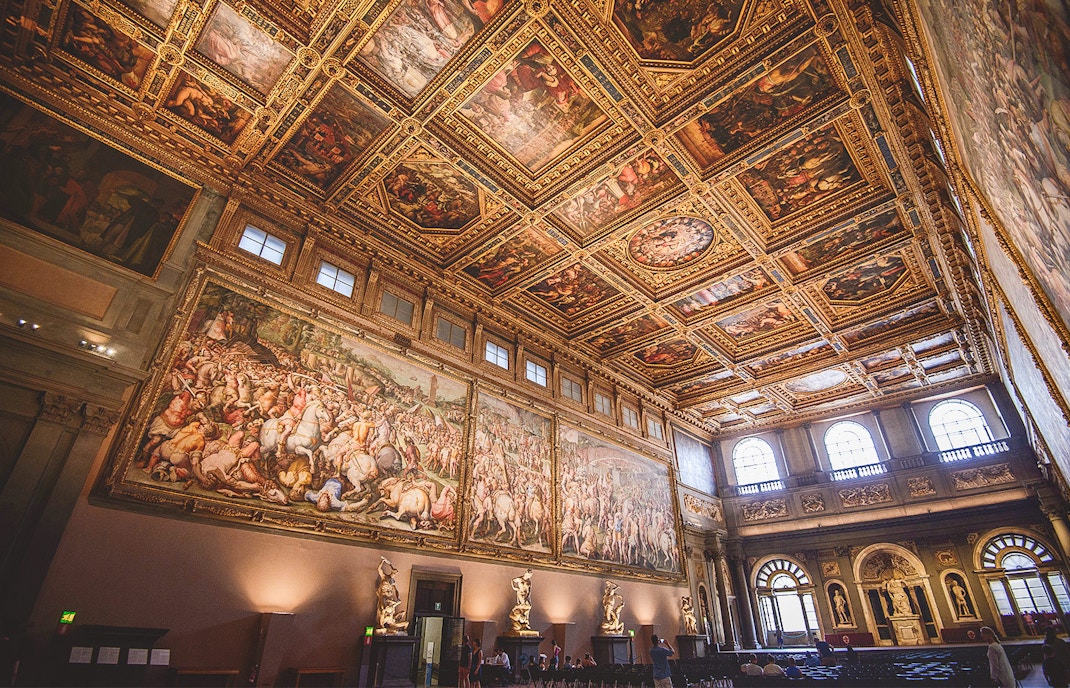
Historical collections
Palazzo Vecchio houses a range of historical artifacts and collections that shed light on the palace's rich past. Explore exhibition rooms that showcase historical documents, artifacts, and objects of significance, offering a deeper understanding of the palace's role in Florentine history. The Loeser Collection is a permanent feature found on the Mezzanine level, donated from the private collection of art historian Charles Loeser.
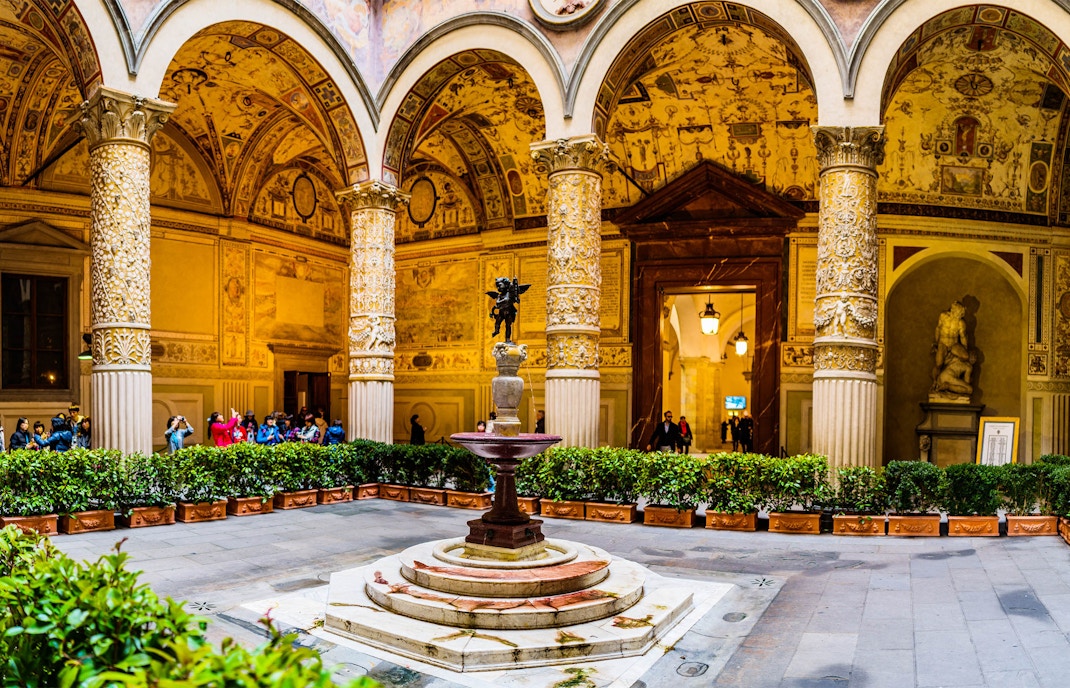
Palazzo Vecchio courtyards
Step into the enchanting courtyards of Palazzo Vecchio, where artistic elements blend with architectural splendor. These serene spaces feature sculptures, fountains, and lush greenery, providing a tranquil retreat within the palace grounds.
